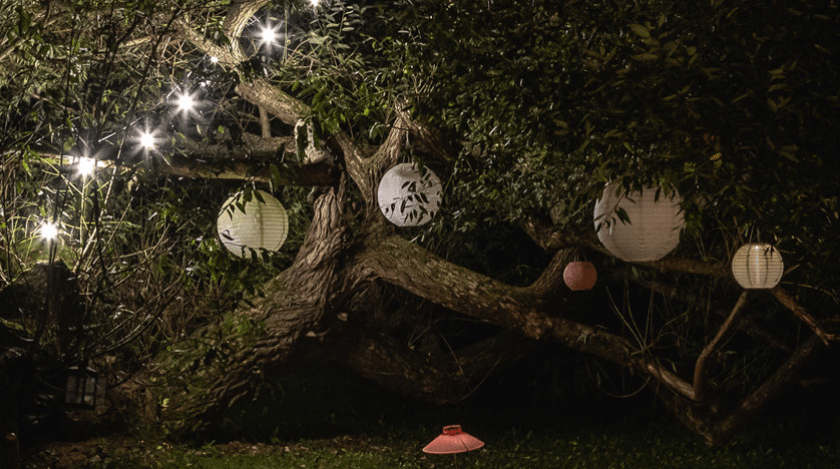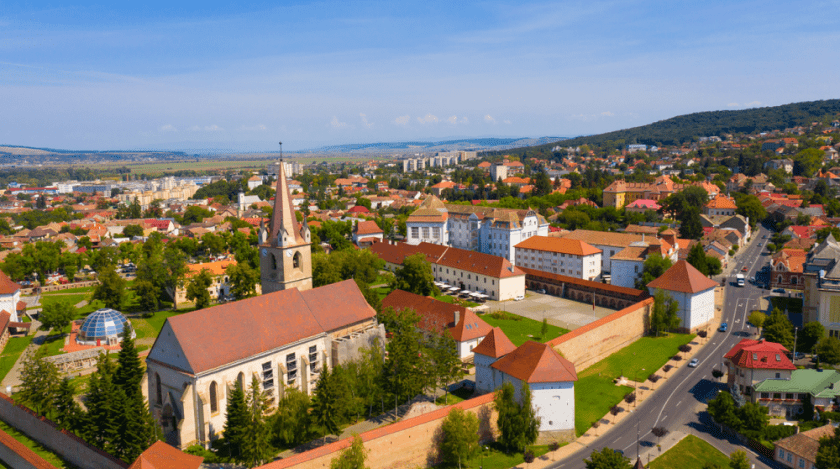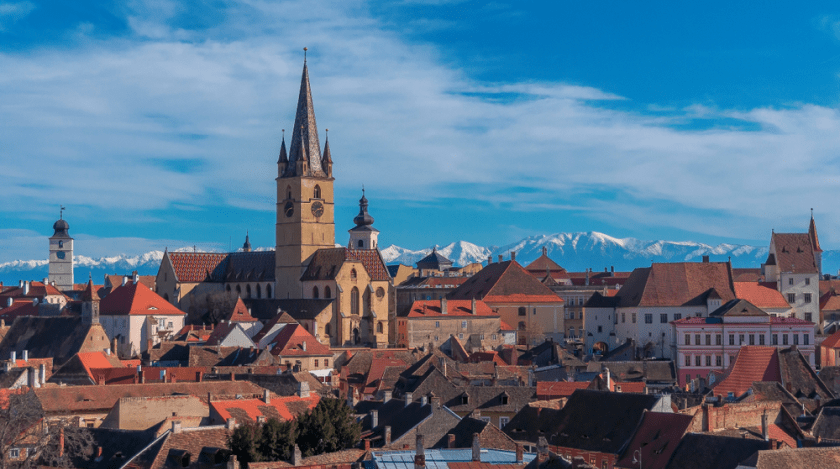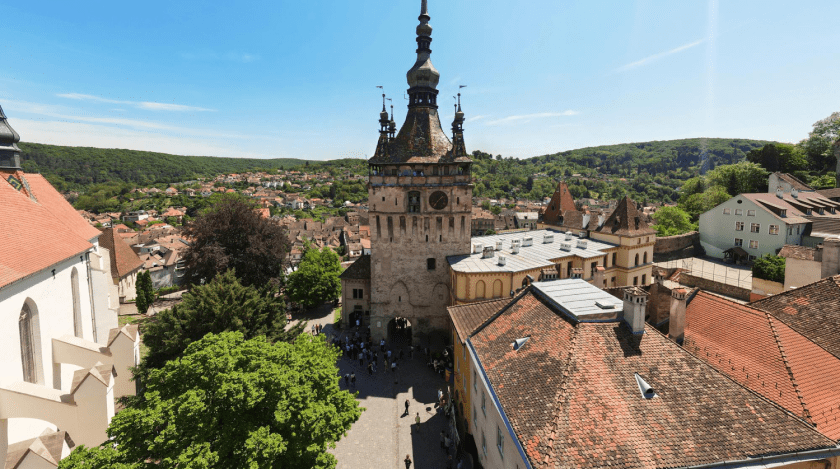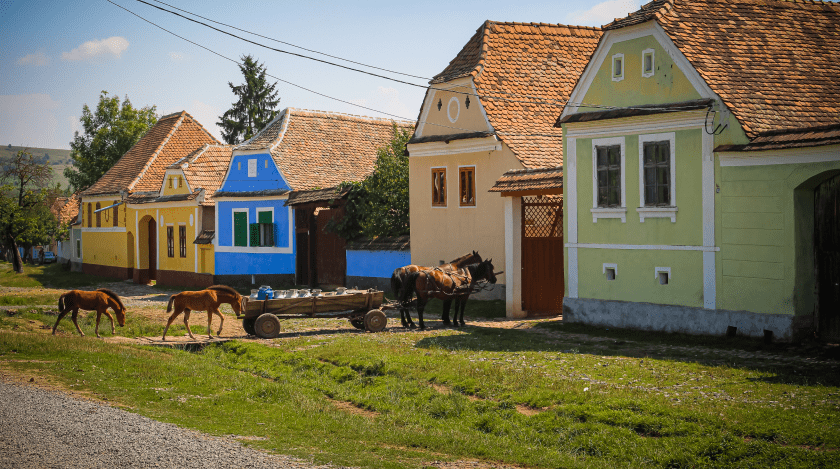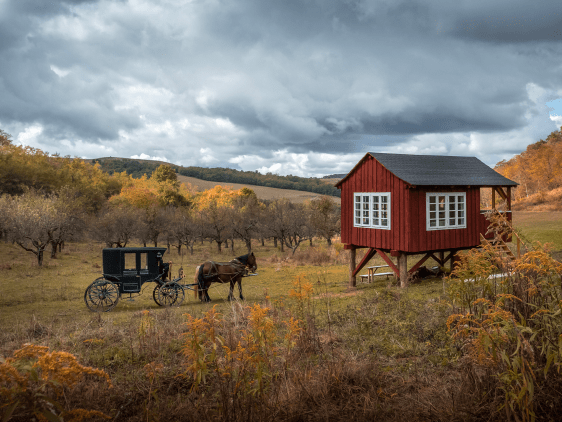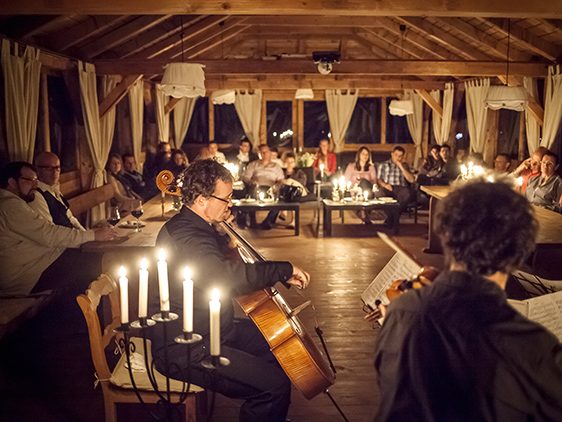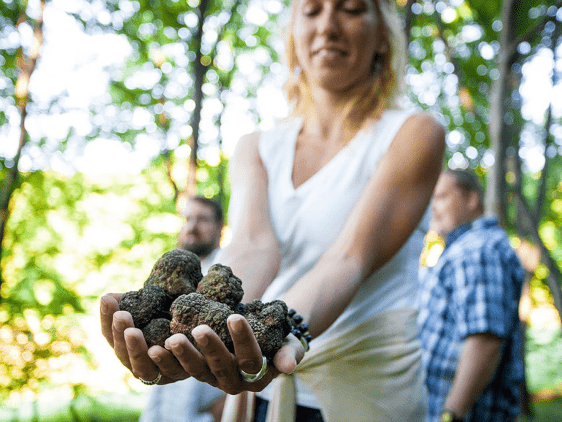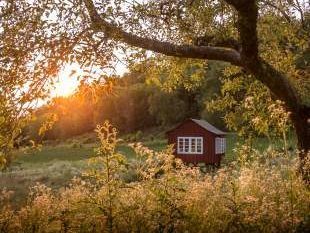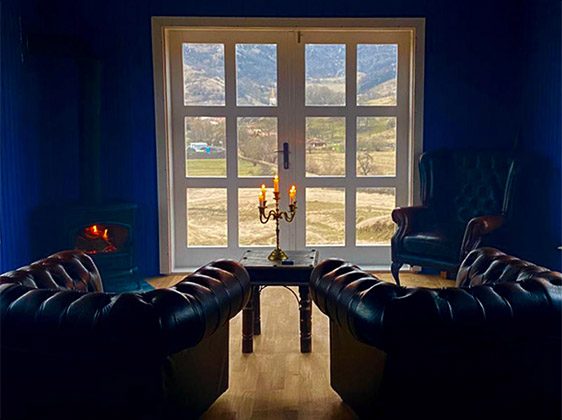Romania’s Carpathian Mountains are home to one of Europe’s largest brown bear populations, a testament to the country’s commitment to preserving its natural heritage. But with a growing bear population and increasing human activity, understanding the dynamics between these majestic creatures and local communities is crucial.
This article explores the unique characteristics of Romanian brown bears, delves into the latest population estimates, highlights the vital role of bear sanctuaries, and offers practical advice for safe bear watching and navigating bear habitats like Via Transilvanica.
- The brown bears of Romania – A natural treasure
- Bear population in Romania – Facts and figures
- Bear sanctuaries – Protecting Romania’s gentle giants
- Bear watching in Romania – A thrilling wildlife experience
- Human-bear interactions – Challenges and solutions
- Are there bears on Via Transilvanica?
The brown bears of Romania – A natural treasure
As you explore Romania’s wilderness, you’ll encounter one of Europe’s most remarkable wildlife treasures: the majestic brown bears of Romania. These incredible creatures call the Carpathian Mountains home, forming one of the continent’s most significant bear populations outside Russia. The Carpathian bears stand as a living symbol of Romania’s rich biodiversity and natural heritage.
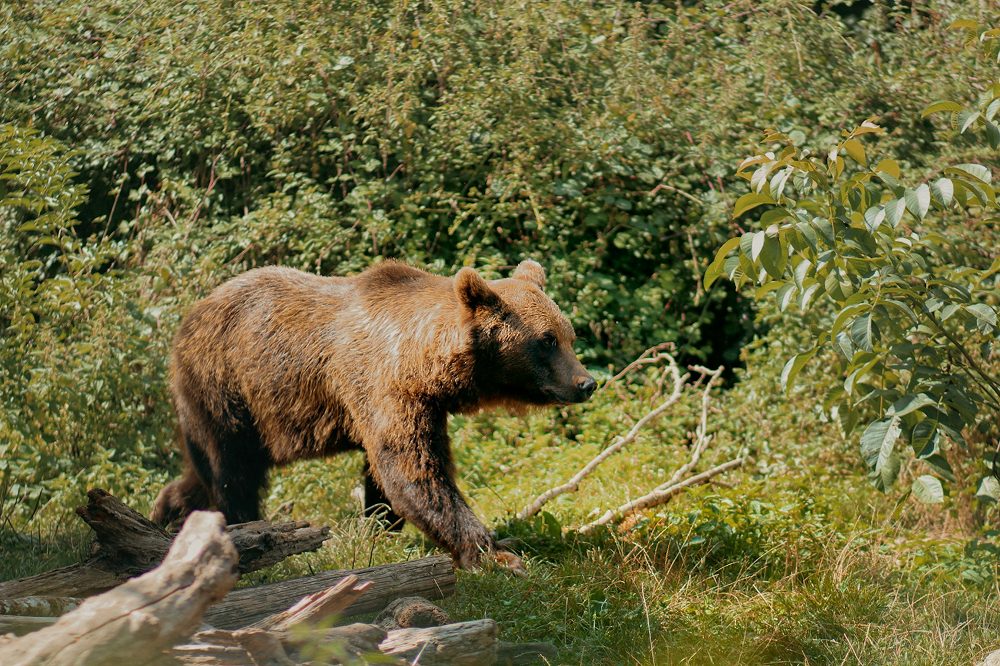
What makes Romanian brown bears special is their adaptation to the diverse mountain ecosystems of the Carpathians. You’ll find these animals thriving in dense forests, alpine meadows, and rocky terrain across the country’s mountainous regions. Their presence indicates a healthy ecosystem, as bears serve as umbrella species – protecting their habitat benefits countless other wildlife.
The bears in Romania have evolved behavioral patterns influenced by the region’s climate and geography. During spring and summer, you might see them foraging for berries, roots, and insects in mountain clearings. Their omnivorous diet includes fish from mountain streams and honey from wild beehives, showcasing their adaptability to the Romanian landscape.
These bears play a crucial role in seed dispersal throughout the Carpathian forests, helping maintain the balance of mountain ecosystems. Their seasonal movements between different elevations create natural corridors that support biodiversity across Romania’s protected areas and national parks.
Discover Romania’s raw beauty step by step on the Via Transilvanica, the country’s first long-distance hiking trail, which winds through some of the most unspoiled habitats in Europe. Learn more about this epic journey here and start planning your adventure into the heart of the Carpathians, if you’re curious to explore the breathtaking wilderness where Carpathian brown bears still roam free.
Bear population in Romania – Facts and figures
Romania hosts Europe’s largest bear population outside Russia, with these creatures primarily inhabiting the Carpathian Mountain range. Understanding the numbers of bears in Romania presents ongoing challenges for researchers and wildlife managers.
Estimates of the bear population in Romania vary depending on the counting methodology. Traditional estimates suggest about 6,000 bears, though recent DNA-based studies by Romania’s Forestry Research Institute indicate between 10,419 and 12,770 individuals. This scientific approach, analyzing over 24,000 samples collected across three years, represents an advancement in population assessment accuracy.

The variation in population estimates stems from different counting methods. Traditional tracking can lead to double-counting, as bears travel considerable distances while foraging. DNA analysis provides more precise data by identifying individual bears through genetic markers found in hair and fecal samples.
Several factors influence Romania’s bear population dynamics. Habitat availability, food sources, human encroachment, and climate patterns all play crucial roles. The Carpathian Mountains provide ideal conditions with extensive forest cover, diverse food sources, and relatively undisturbed wilderness areas that support healthy bear communities.
To truly understand the deep connection between Romania’s landscape and its legendary brown bears, take a moment to explore the fascinating story of the Bear Cave, a place where history, geology, and wildlife come together. You’ll find everything you need to know about its location, access, and sights.
Bear sanctuaries – Protecting Romania’s gentle giants
Romania’s commitment to bear conservation shines through its sanctuary system, with facilities dedicated to rescuing and rehabilitating bears that have suffered from captivity and exploitation. These Romanian bear sanctuaries provide havens for animals rescued from circuses, zoos, and private ownership.
The m Bear Sanctuary near Zărnești stands as Europe’s largest brown bear sanctuary, housing over 100 rescued bears across 69 hectares of natural forest habitat. When you visit this sanctuary, you’ll witness the transformation of bears that once lived in cramped cages or performed in circuses, now roaming freely through spacious enclosures that mimic their natural environment.

These sanctuaries operate on principles of animal welfare and conservation education. The bears receive specialized veterinary care, proper nutrition, and the opportunity to express natural behaviors like foraging, climbing, and socializing with other bears. Many residents arrive with physical and psychological trauma from years of captivity, requiring extensive rehabilitation.
The sanctuary model focuses on providing permanent homes rather than entertainment. These facilities prioritize the bears’ well-being over visitor experience, though educational tours help raise awareness about wildlife conservation and animal welfare issues.
Through rescue operations, medical treatment, and habitat restoration, Romanian bear sanctuaries contribute to conservation efforts while demonstrating humane alternatives to keeping wild animals in captivity. Their work supports broader wildlife protection initiatives and promotes responsible tourism that benefits both animals and local communities.
Bear watching in Romania – A thrilling wildlife experience
Romania offers exceptional opportunities for bear watching in the Carpathian wilderness. The country’s bear population and mountain ecosystems create conditions for observing these creatures in their natural habitat.
Professional bear tracking in Romania tours operate throughout the Carpathian region, with experienced guides leading small groups into prime bear territories. These excursions typically occur during early morning or evening hours when bears are most active, increasing your chances of wildlife encounters while maintaining safe distances.
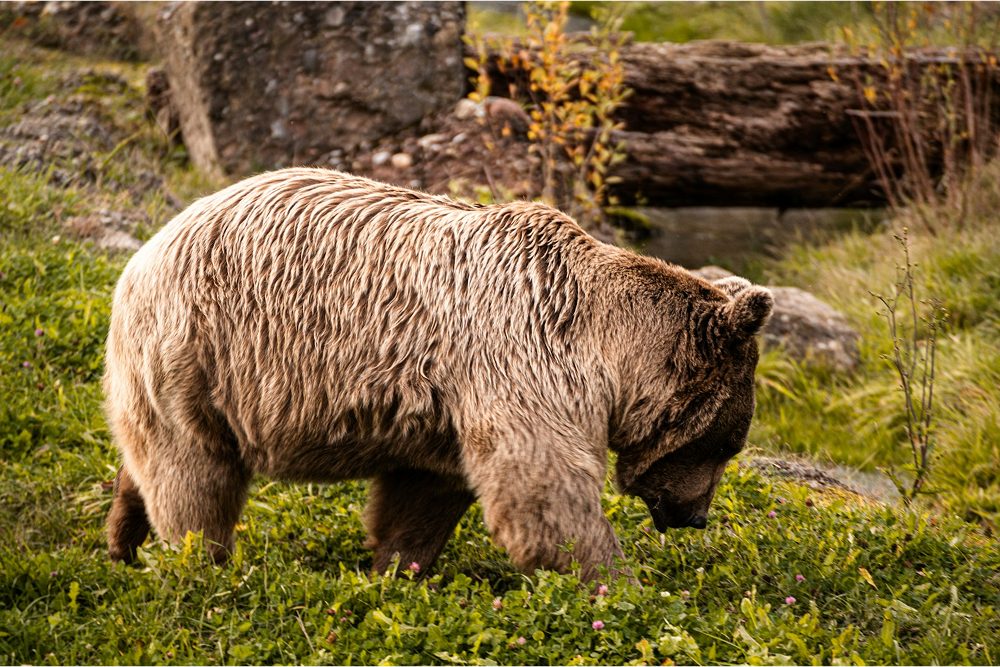
The best locations for bear watching include the forests around Brașov, Harghita, and Covasna counties, where dense woodland meets alpine meadows. Spring through early autumn provides viewing conditions, as bears emerge from hibernation and remain active before winter preparations begin.
Responsible bear watching follows guidelines to protect both visitors and wildlife. You’ll learn to make noise while hiking to avoid surprising bears, maintain distances during sightings, and respect the animals’ natural behaviors without interference.
Many tour operators combine bear watching with broader wildlife experiences, offering opportunities to observe other Carpathian species like lynx, wolves, and diverse bird populations. These tourism initiatives provide economic benefits to rural communities while supporting habitat conservation efforts throughout Romania’s mountain regions.
Human-bear interactions – Challenges and solutions
As Romania’s bear population grows and human development expands into bear habitats, managing human – bear interactions has become complex. Understanding these challenges helps you appreciate the balance required for coexistence.
The primary concerns involve property damage, livestock predation, and safety risks in both rural and tourist areas. Bears venturing into villages and towns often seek accessible food sources like garbage, fruit trees, or beehives, leading to conflicts with residents. Farmers face economic losses when bears attack livestock, creating negative attitudes toward conservation efforts.
Tourist safety presents another challenge, particularly along hiking trails and in areas where bear attacks in Romania have occurred. Increased outdoor recreation in bear habitats raises the probability of encounters, requiring safety education and management strategies.

Effective solutions focus on prevention. Proper waste management eliminates attractants that draw bears into human settlements, while electric fencing protects apiaries and livestock. Community education programs teach residents and visitors how to minimize risks and respond appropriately during bear encounters.
Wildlife corridors and habitat restoration help maintain natural food sources, reducing bears’ need to venture into human areas. When conflicts persist, wildlife managers may relocate problem bears or, as a last resort, authorize controlled hunting to manage population density in specific areas.
The topic of bear hunting in Romania reflects debates between conservation groups advocating for non-lethal management and those supporting population control measures. Finding solutions requires balancing wildlife protection with human safety and economic concerns.
And if you’re drawn to the mysterious world beneath the mountains, don’t miss the chance to discover Scărișoara Cave, home to one of the largest underground glaciers in Europe. Learn more about this natural wonder and when to visit it.
Bear safety tips for Via Transilvanica
When hiking sections of Via Transilvanica through bear country, following safety protocols reduces risks and enhances your outdoor experience. Make noise while walking, especially around blind corners or dense vegetation where visibility is limited. Talking, clapping, or using bear bells alerts bears to your presence, allowing them to avoid contact. Being proactive about making your presence known is key to preventing unwanted encounters.
Travel in groups when possible, as bears are less likely to approach multiple people. Store food properly in bear -resistant containers or hang it away from your sleeping area if camping along the trail. Never feed bears or leave food scraps that might attract them to the area. Proper food storage is crucial for minimizing the risk of attracting bears to your campsite.
If you encounter a bear, remain calm and avoid sudden movements. Back away slowly while facing the bear, make yourself appear larger by raising your arms, and speak in a calm, firm voice. Never run, as this may trigger a chase response. Most bear encounters end peacefully when both parties maintain respectful distance. Knowing how to react calmly and assertively can help de-escalate a potentially dangerous situation.
Carry bear spray in accessible locations and know how to use it effectively. Contact local authorities or trail information centers for current bear activity reports before beginning your hike, as they can provide updates about recent sightings or temporary trail closures in specific areas. Staying informed about recent bear activity can help you make informed decisions about your route and safety precautions.
If you’re chasing high-altitude beauty and unforgettable views, make sure to include Lake Bâlea, a stunning glacial gem along the Transfăgărășan, on your travel list. Find out what makes this place so special and how to get there.
To recap, while bear encounters are rare, being prepared is essential for your safety and peace of mind. These simple tips help you stay safe and enjoy the trail responsibly.
- Make noise while hiking – Talk, clap, or use a bear bell to avoid surprising bears.
- Hike in groups – Bears are less likely to approach multiple people.
- Store food properly – Use bear-proof containers and never leave food scraps behind.
- Never run if you see a bear – Stay calm, back away slowly, and speak firmly.
- Carry bear spray – Keep it accessible and know how to use it.
- Check trail updates – Ask locals or info centers about recent bear activity before setting out.
Are there bears on Via Transilvanica?
Via Transilvanica, Romania’s long hiking trail stretching over 1,400 kilometers across the country, passes through regions where bears are present. As you plan your journey along this trail, understanding bear presence and safety becomes essential for a successful hiking experience.
The trail crosses bear habitats, particularly in the Carpathian Mountain sections where Romania’s bear populations reside. Areas around Brașov, Harghita, and other mountainous counties along the route have documented bear activity, making encounters possible though not guaranteed. While bear encounters are possible, they are not necessarily probable.
Your awareness of bear presence shouldn’t discourage hiking Via Transilvanica, but rather encourage preparation and safety practices. The trail’s popularity and regular foot traffic reduce the likelihood of bear encounters, as these animals typically avoid areas with frequent human activity. Staying informed and prepared will allow you to enjoy the trail with peace of mind.
For a different kind of encounter with nature—one that soothes rather than thrills—take a look at Lake Ursu, Europe’s only natural heliothermal spa, nestled in the heart of Transylvania. Discover its unique healing properties and how to experience it for yourself.
Romania’s brown bears are more than just symbols of wilderness — they are key to understanding the country’s deep ecological roots and its wild, untamed spirit. Whether you’re hiking through remote forests on the Via Transilvanica, visiting sanctuaries, or watching wildlife responsibly, encountering these majestic animals offers a rare glimpse into Europe’s last great wilderness. With the right knowledge and preparation, your journey through bear country can be both safe and unforgettable.
Bildnachweis:Unsplash.com, AI

